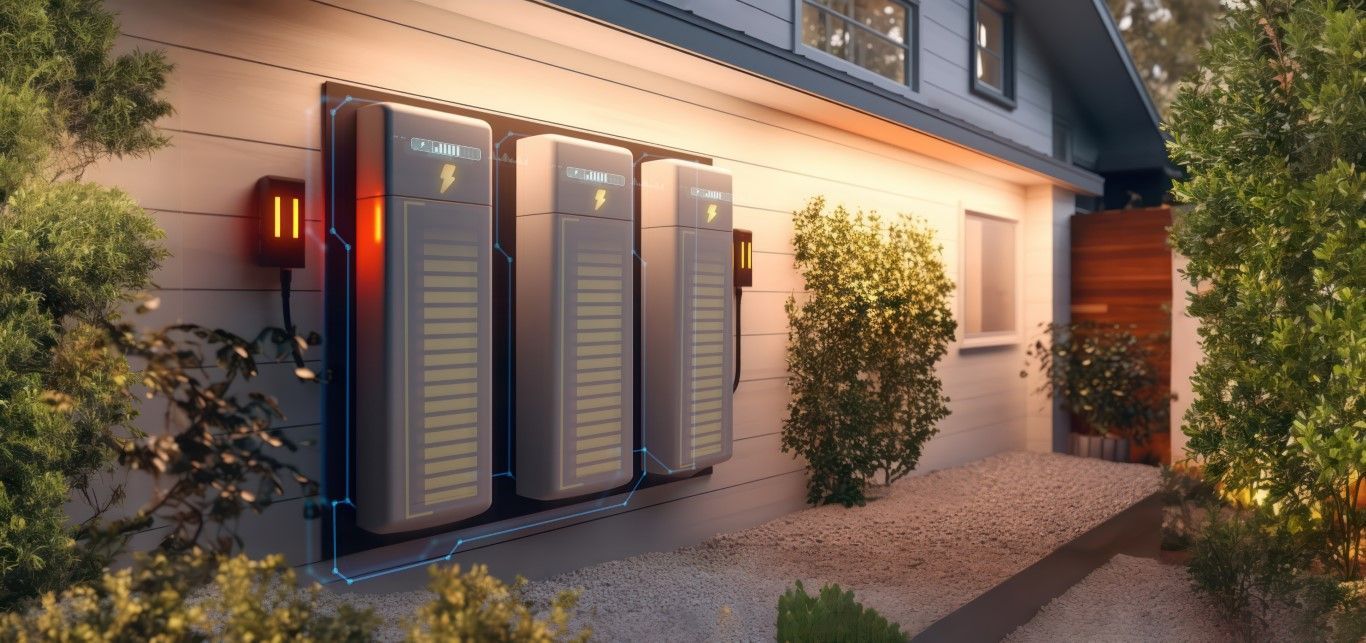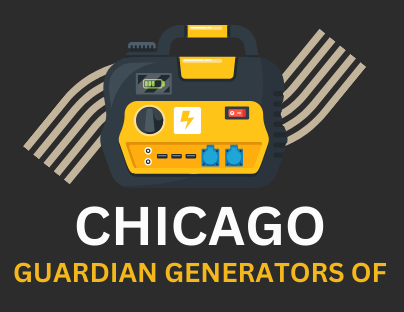Solar Generators in Chicago IL
Solar generators are devices that convert sunlight into electrical energy, providing an alternative power source to traditional generators. They work by harnessing sunlight through solar panels, which then generates electricity that is stored in batteries. This stored energy can be used to power various electrical devices and appliances. Unlike conventional generators that run on fuel, solar generators rely on renewable solar energy, making them a cleaner and more sustainable option.
Basic Components
A typical solar generator consists of three main components: solar panels, a battery storage system, and an inverter. The solar panels capture sunlight and convert it into electrical energy. This energy is then stored in the battery, which acts as a reservoir for the electricity. The inverter converts the stored energy from direct current (DC) to alternating current (AC), making it compatible with most household appliances and electronics. Additionally, some solar generators come with charge controllers to regulate the power flow and ensure efficient energy storage.
Types of Solar Generators
Solar generators come in various types, each suited to different needs and applications. The main types include:
- Portable Solar Generators: These are compact and lightweight, ideal for outdoor activities like camping or tailgating. They offer a convenient way to power small devices and appliances on the go.
- Home Backup Solar Generators: Designed for residential use, these generators can provide backup power during outages or supplement your home’s energy needs. They are typically larger and have higher capacity compared to portable models.
- Commercial Solar Generators: Used for business or industrial purposes, these generators offer significant power output to support larger operations. They are built to handle higher energy demands and provide reliable power solutions for various commercial applications.
Applications and Uses
Solar generators are versatile and can be used in various scenarios. Some common applications include:
- Emergency Backup Power: They provide a reliable power source during power outages, ensuring that essential appliances like refrigerators and medical equipment continue to operate.
- Outdoor Activities: Ideal for camping, hiking, and other outdoor adventures, they can power devices like laptops, phones, and portable refrigerators.
- Remote Locations: Solar generators are perfect for areas without access to the electrical grid, providing a sustainable power source for off-grid living or remote work sites.
- Energy Supplement: They can supplement your home’s power supply, reducing reliance on the grid and lowering energy costs.

How It Differs from Traditional Generators
Solar generators differ significantly from traditional fuel-based generators. Traditional generators run on gasoline, diesel, or propane, producing emissions and requiring fuel storage. They are also noisy and have higher operational costs. In contrast, solar generators produce clean, renewable energy without emissions or noise. They require no fuel, just sunlight, and have lower ongoing costs since sunlight is free. Additionally, solar generators are often more environmentally friendly, aligning with sustainable energy practices.
Power Needs and Capacity
The power needs and capacity of a solar generator depend on the intended use. Portable solar generators usually offer lower capacities, sufficient for small devices and brief power needs. Home backup systems have higher capacities to handle essential household appliances, providing several hours of backup power. Commercial generators are designed for higher power demands, capable of supporting large equipment and continuous operations. When choosing a solar generator, consider your specific power requirements, the number of devices you need to power, and the duration of use.
Battery Type and Storage
The battery is a crucial component of a solar generator, affecting its performance and storage capacity. Most modern solar generators use lithium-ion batteries due to their high energy density, long lifespan, and low maintenance requirements. These batteries offer better efficiency and longer service life compared to older lead-acid batteries. The battery’s capacity, measured in watt-hours (Wh) or amp-hours (Ah), determines how much energy it can store and how long it can power your devices. Proper battery maintenance and management are essential for optimal performance and longevity.
Portability and Size
Portability and size vary depending on the type and purpose of the solar generator. Portable solar generators are compact and lightweight, designed for easy transport and convenience. They often come with handles or wheels for easy maneuverability. Home backup generators are larger and less portable, designed to be stationary and integrated into your home’s energy system. Commercial generators are the largest, built to provide substantial power output and support significant energy needs. When selecting a solar generator, consider the balance between power capacity and portability based on your specific requirements.
If you’re interested in exploring
solar generators in Chicago, IL, or have any questions about the best options for your situation, contact us today. Our team is here to help you find the perfect solar generator to meet your power requirements and provide you with reliable, clean energy solutions. Reach out to us for expert advice, personalized recommendations, and exceptional service. Let’s work together to harness the power of the sun and enjoy the benefits of sustainable energy!
Basic Setup and Installation Process of Solar Generators

Solar generators are becoming increasingly popular due to their ability to provide sustainable and reliable power. They are ideal for a range of applications, from powering outdoor adventures to serving as backup power sources during emergencies. Understanding the basic setup and installation process can help you get the most out of your solar generator. In this guide, we’ll walk you through the essential steps to set up and install your solar generator.
STEP 1
Choose the Right Location
Before you start, select a location for your solar generator that is both convenient and suitable for its operation. Ideally, this should be a spot that receives ample sunlight if your system includes solar panels. Ensure that the area is dry, well-ventilated, and easily accessible for future maintenance. Avoid placing the generator in areas prone to water accumulation or extreme weather conditions.
STEP 2
Unpack and Inspect Your Solar Generator
Once you’ve chosen a location, unpack your solar generator and its components. Check the items against the manual to ensure you have everything you need. Common components include the generator itself, solar panels, battery packs, cables, and connectors. Inspect each part for any visible damage from shipping. If you find any issues, contact the supplier for assistance.
STEP 3
Assemble the Solar Panels
If your solar generator system includes solar panels, follow the assembly instructions provided in the manual. This typically involves attaching the panels to a mounting frame or stand. Make sure the panels are securely fastened and oriented to capture maximum sunlight. The angle of the panels can affect their efficiency, so adjust them according to the manufacturer’s recommendations.
STEP 4
Connect the Solar Panels to the Generator
Once the panels are assembled, connect them to the solar generator. Use the provided cables and connectors to link the panels to the generator’s input ports. Ensure that the connections are firm and secure to prevent any power loss. Double-check the wiring diagram in your manual to confirm that you are connecting everything correctly.
STEP 5
Install the Battery Pack
If your solar generator includes a separate battery pack, install it according to the instructions. Typically, this involves connecting the battery to the generator unit. Make sure the battery is properly aligned and connected to avoid any potential issues. Follow the guidelines for connecting the battery to ensure safe and efficient operation.
STEP 6
Test the System
After everything is connected, turn on the solar generator and test its functionality. Check that the solar panels are generating power and that the generator is receiving and storing energy correctly. Monitor the system for a few hours to ensure that it operates smoothly. If you encounter any issues, refer to the troubleshooting section of your manual or contact customer support for help.
STEP 7
Regular Maintenance
To keep your solar generator in good working condition, perform regular maintenance. This includes cleaning the solar panels to remove dust and debris, checking the battery levels, and inspecting all connections. Regular maintenance helps ensure that your system remains efficient and reliable over time.
If you have any questions about the setup and installation of your solar generator, or if you need assistance with any part of the process, feel free to reach out to us. Our team is here to provide support and ensure that you get the most out of your solar power system. Contact us today to speak with an expert and get the help you need.
Common Myths and Misconceptions About Solar Generators
Solar generators are gaining popularity as a clean and sustainable energy solution. However, despite their growing presence, many people still harbor myths and misconceptions about them. These misunderstandings can prevent individuals from embracing solar power, missing out on its many benefits. In this blog post, we'll debunk some of the most common myths about solar generators, shedding light on the facts and helping you make informed decisions about your energy needs.
Myth#1: Solar Generators Are Too Expensive
One of the most persistent myths about solar generators is that they are prohibitively expensive. While it's true that the initial cost can be higher than traditional generators, the long-term savings can outweigh this expense. Solar generators have no fuel costs and require minimal maintenance, which can lead to significant savings over time. Additionally, technological advancements and increased competition have made solar generators more affordable than ever.
Myth#2: Solar Generators Don’t Work in Cloudy Weather
Another common misconception is that solar generators are ineffective in cloudy or overcast conditions. While it's true that solar panels generate more electricity on sunny days, they still produce power in cloudy weather. Solar panels can capture diffuse sunlight, and modern solar generators are designed to work efficiently even when the sun is partially obscured.
Myth#3: Solar Generators Are Not Powerful Enough for All Needs
Some people believe that solar generators are only suitable for small, low-power applications. In reality, there are various models available that can handle a wide range of power needs. Whether you need to power small devices or run larger appliances, there's likely a solar generator that can meet your requirements. It's essential to choose a model with the appropriate capacity for your specific needs.
Myth#4: Solar Generators Require a Lot of Maintenance
Maintaining solar generators is often perceived as being complex and time-consuming. However, solar generators are relatively low-maintenance. Regular cleaning of the solar panels and periodic checks are usually sufficient to keep them in good working condition. Unlike traditional generators, which require frequent fuel refills and engine maintenance, solar generators have fewer moving parts and are less prone to wear and tear.
Myth#5: Solar Generators Can’t Be Used During Winter
A common belief is that solar generators are not effective during the winter months. While it's true that shorter daylight hours and lower sun angles can reduce the amount of solar energy captured, solar generators can still function effectively in winter. With proper placement and care, solar panels can continue to generate power even in colder conditions. Snow on the panels can reduce efficiency temporarily, but it usually melts off quickly.
Myth#6: Solar Generators Are Not Environmentally Friendly
Some individuals question the environmental benefits of solar generators, believing that the manufacturing process offsets their green credentials. While it's true that producing solar panels requires energy and resources, the overall environmental impact of solar generators is still significantly lower compared to fossil fuel-based power sources. Once installed, solar generators produce clean, renewable energy with no emissions, contributing positively to environmental conservation.
If you have more questions about solar generators or are considering making the switch to solar power, we're here to help. Our team is ready to provide expert advice, answer your queries, and guide you through the process of choosing and installing a solar generator that fits your needs. Contact us today to learn more about how solar energy can benefit you and to schedule a consultation with one of our knowledgeable professionals. Let us help you clear up any doubts and embrace the advantages of solar power with confidence.
